Brand differences are critical to the average revenue for the majority of WooCommerce store owners. It doesn’t matter whether you need different shapes, colors, or fabrics. What matters is that the clients can quickly identify them and that they have enough knowledge to test them. Otherwise, those things will sit untouched in your shop, accumulating dust.
There is, nevertheless, a concern. In a typical WooCommerce configuration, product combinations are buried inside the product page and are only given one picture each. It’s difficult to view the WooCommerce variants in the best way because there are too many restrictions in place.
The good news is that WooCommerce combinations can be tweaked to boost sales and improve customer satisfaction. We’ll teach you how to do it in this post.
Before going further into the topics, we want to talk about the importance of data export. There are capabilities that allow you to import or export data from a variety of different sources, including files, online services, and other devices. Regular exports help keep your files safe in the event that anything goes wrong with the system, servers, or any other component.
We’d be happy to propose a plugin that works well with WooCommerce and can help you automate the export process. WooCommerce Order Export is a simple-to-use plugin that enables you to export all of your WooCommerce orders and product information. You may narrow down your search results by using filters. Paid edition offer even more capabilities than the free one, including exporting all the data required, automatic exports to email or FTP, which is ideal for dropshippers, the ability to rearrange columns, and the ability to set up numerous exports.
What is a variable product?
A variable product is a WooCommerce product that offers the consumer a variety of customization options. If you’re selling t-shirts, for example, you might have several different styles, colors, and SKUs per item.
Attributes are the terms used to describe these commodity alternatives. When an online shopper selects the choices or “attributes” they like for a particular product, the mix they add to their cart as their final choice is referred to as a variety. Customers will pick the particular WooCommerce variety they choose to purchase from a drop-down menu on a regular variable commodity listing in WooCommerce.
Best ways to optimize your WooComerce variations
1. Add or Change The Products’ Global Attributes
When it comes to incorporating and customizing the products’ attributes, WooCommerce doesn’t offer you a lot of choices by design. You have greater leverage over the attributes you can incorporate and how users communicate with them when using Woo Variation Swatches.
When you go to the Products > Attributes, you will notice a lot more details about the attributes. If you choose to add new global attributes, you can now choose which kind of swatch to use for them. Colors, images, and labels can all be customized:
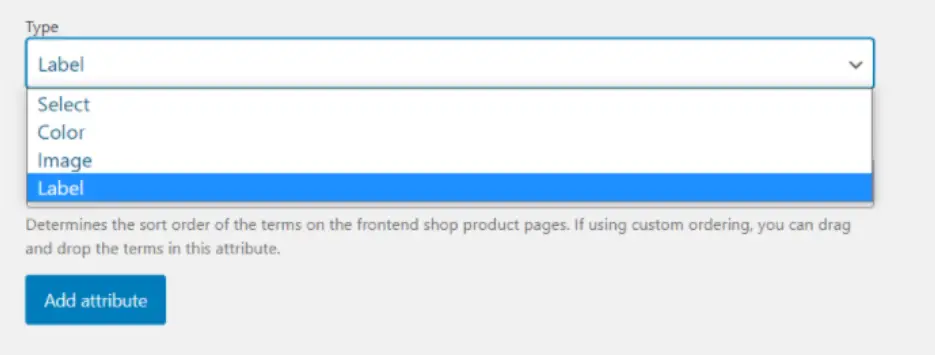
Once you’ve added an attribute, go to its row and pick the Configure option to specify the variants you want to use. You’ll have personalized choices for adding new words for each form of swatch:
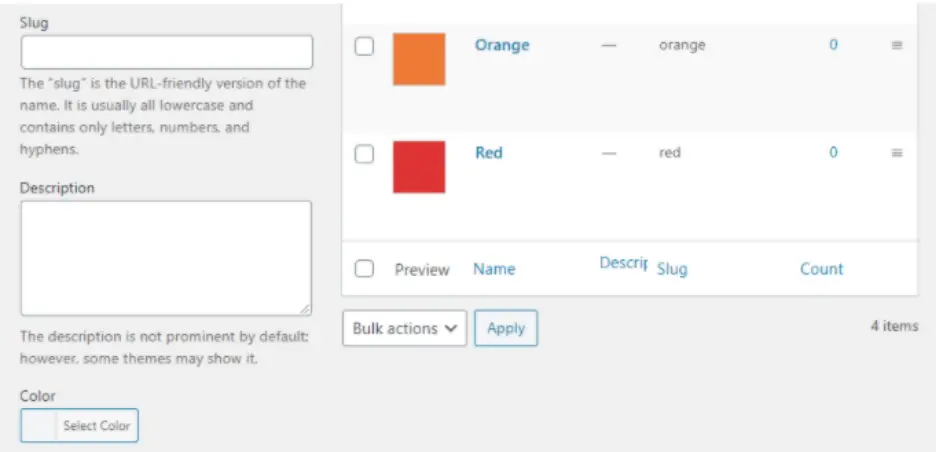
This addon allows you to have more global leverage over attributes. You should, however, override swatch settings for individual items if necessary.
2. Connect product variations
Can you find yourself in direct competition with Amazon for the items you sell? If that’s the case, you can borrow one of their SEO strategies: joining product variants together.
You may build a more comprehensive product archive by connecting items of any kind together by their attributes using the WooCommerce Linked Variations plugin. But what does this mean in practice?
You can offer each product variant its own URL, title, and definition by using a related variants plugin. Not only can this vastly expand your product archive and visibility in search engines, but it will also result in much more precise search results and product filtering inside your web store.
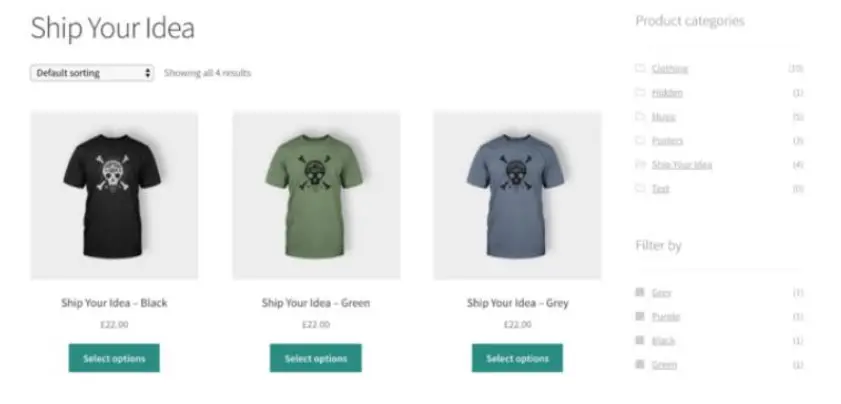
However, the advantages go beyond improved long-tail search scope and product recognition on the web. Since each variant has its own URL, you can promote them on Google Shopping and Facebook, and your customers can exchange direct links with their friends via email or social media.
3. Additional fields to product variations
Another drawback with WooCommerce’s default setup is that you can’t apply some extra details to a variation.
Customers are only given the option of selecting a medium-sized t-shirt, for example. But what if there’s any detail about the particular scale, color, or style difference that you absolutely must share with your customers? WooCommerce Custom Fields for Product Variations comes in handy in this situation. You will use this plugin to display and arrange extra variety details for your customers.
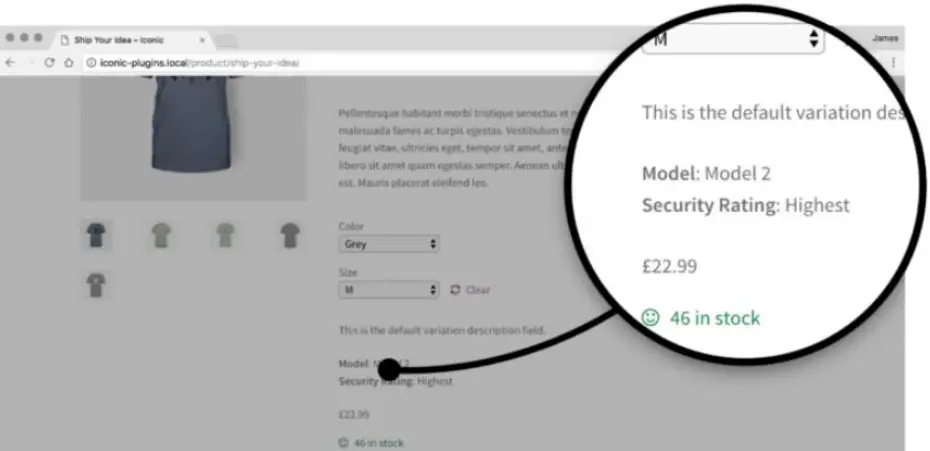
Each of your WooCommerce product variants should have any amount of custom fields, making it simple for your consumers to find any additional product details they need.
4. Swatch Styles can be configured at the product level
When adding the Woo Variation Swatches plugin, you get so many options. When you edit a particular product, you’ll see a new Swatches tab under the Product data section. You may configure the vector swatches for that particular object in this column. Let’s presume you have a shirt with many different sizes and colors to choose from:
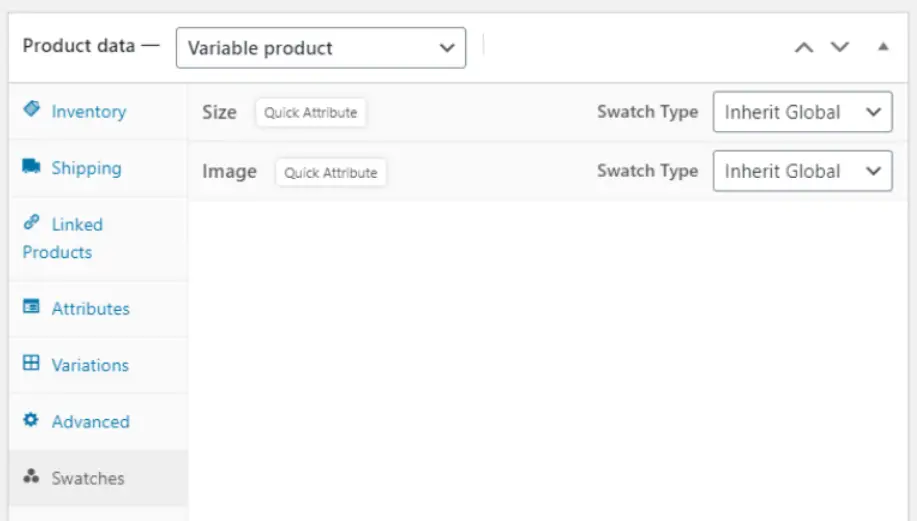
By default, the plugin will generate a swatch for each commodity depending on the features you choose and the variants you specify. You do, however, have complete power over the swatch. For example, if you choose the Inherit Global list next to the Images attribute, you can modify the attribute’s colors, images, and labels:
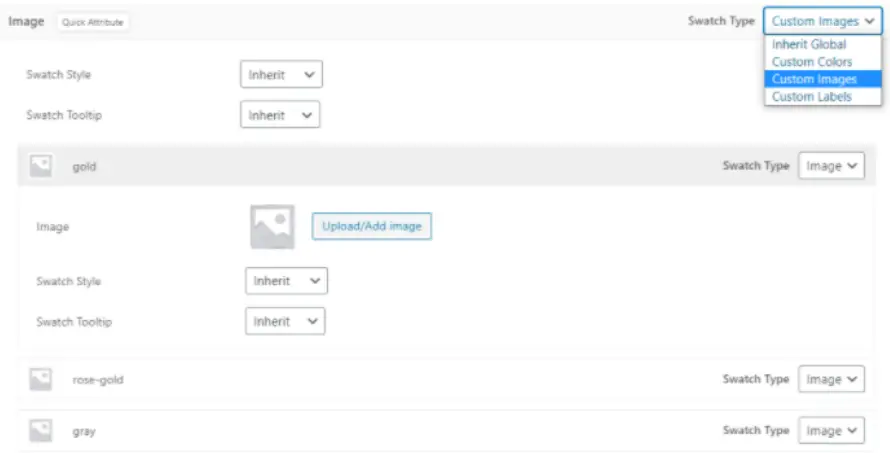
If you wish to modify the global settings, this is where you can adjust the icons that show on your swatch. These solutions can be useful for goods that have a lot of different variants.
5. Table with Product Variations for WooCommerce
The WooCommerce Variations Table displays a list of all your variations in a table format that is easy to read. You have complete control of what data is shown in the table, and the table configuration sample file can be customized to suit the requirements.
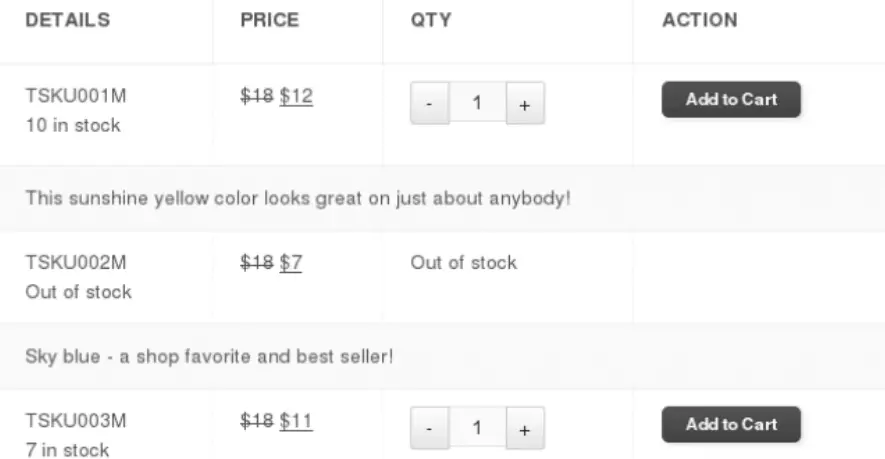
The view of thumbnail pictures, SKU numbers, stock amounts, characteristics, a quantity selector, an add to cart icon, and other features can be turned on or off. You can also cover the default “add to cart” type on a product’s website and focus on the table’s “add to cart” feature instead, as well as change the “add to cart” button text label to whatever you want.
Final Thoughts
WooCommerce is a fantastic plugin for creating an e-commerce store. If your online store is going to survive in this highly competitive market, you’ll need to customize your WooCommerce variants outside their default settings and do proper management using inventory lists. Whatever kind of online store you run, the ‘variable goods’ features in WooCommerce will likely help some of your products. The next move is to make such product listings as effective as possible in order to increase conversions and improve the consumer experience.
If you decide to start an affiliate program for your online store, you must check this WooCommerce Affiliate Plugin.


